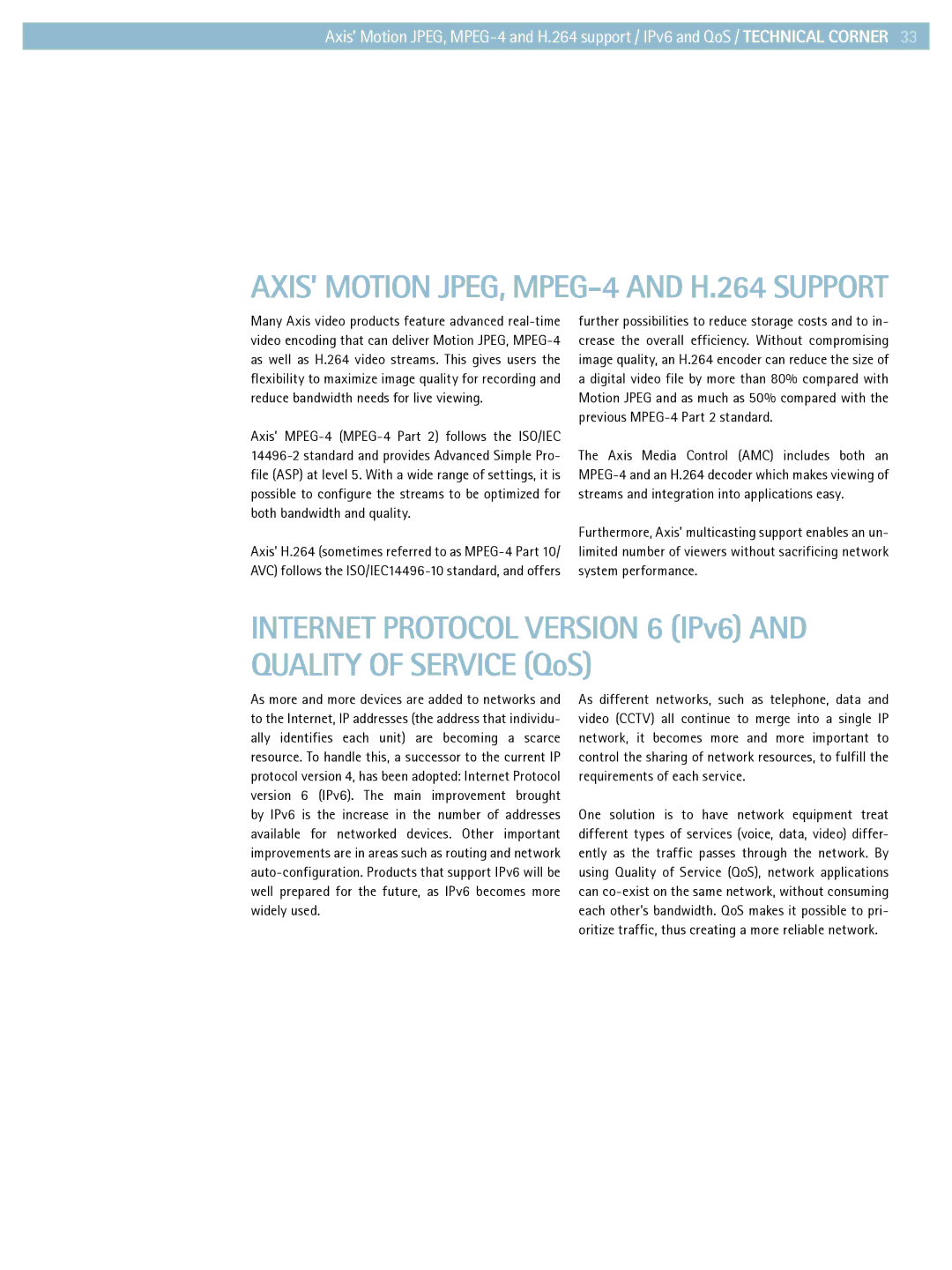Axis’ Motion JPEG,
AXIS’ MOTION JPEG, MPEG-4 AND H.264 SUPPORT
Many Axis video products feature advanced
Axis’
Axis’ H.264 (sometimes referred to as
further possibilities to reduce storage costs and to in- crease the overall efficiency. Without compromising image quality, an H.264 encoder can reduce the size of a digital video file by more than 80% compared with Motion JPEG and as much as 50% compared with the previous
The Axis Media Control (AMC) includes both an
Furthermore, Axis’ multicasting support enables an un- limited number of viewers without sacrificing network system performance.
INTERNET PROTOCOL VERSION 6 (IPv6) AND QUALITY OF SERVICE (QoS)
As more and more devices are added to networks and to the Internet, IP addresses (the address that individu- ally identifies each unit) are becoming a scarce resource. To handle this, a successor to the current IP protocol version 4, has been adopted: Internet Protocol version 6 (IPv6). The main improvement brought by IPv6 is the increase in the number of addresses available for networked devices. Other important improvements are in areas such as routing and network
As different networks, such as telephone, data and video (CCTV) all continue to merge into a single IP network, it becomes more and more important to control the sharing of network resources, to fulfill the requirements of each service.
One solution is to have network equipment treat different types of services (voice, data, video) differ- ently as the traffic passes through the network. By using Quality of Service (QoS), network applications can
